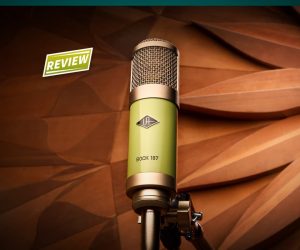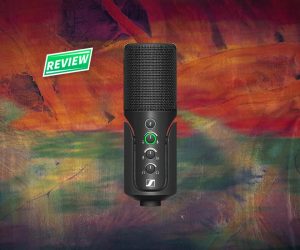
Review: Avid HDX Card
Is the X in ProTools’ new HDX card purely eXcess, or a necessary step for the industry giant grabbing 64 bits between its teeth?
Review: Brent Heber
Unless you’ve been living under a rock since Christmas you will have heard by now that after over a decade of general audio industry dominance, ProTools HD has finally been superseded with the release of Avid’s new HDX card series. But do we really need it? Many studios happily run HD rigs that support up to 192 voices with rock solid reliability and can even go up to 192k sample rates. But how many users are pushing these envelopes? HD users don’t often complain about feeling a ‘voice pinch’ and most work at either 44.1 or 48k with the occasional 96k audiophile amongst them. What’s driving this change?
THE PROBLEMATIC BITS
The Problem? 64-bit operating systems.
ProTools usurped the role of turnkey solutions of 20 years ago by developing software and hardware solutions around consumer computers. Those computers keep changing and developing and that’s where the aging HD architecture is finally being surpassed. HDX was partly a response to the need for a true 64-bit OS architecture that could use the host’s processing power alongside the DSP chips seamlessly, and the need for 64-bit memory addressing to harness more than 4GB of RAM. Some composers shun ProTools as a writing platform due to its virtual instrument power (or perceived lack thereof). Other DAWs on similar hardware often run rings around ProTools if you start counting instances of common processor intensive plug-ins like Omnisphere, Kontakt or convolution reverbs. Avid needed to migrate to a natively 64-bit application to address this (and get access to that valuable RAM), but couldn’t do that without a dramatic change in architecture.

So PT10 came along as a ‘transition release’ (still a 32-bit app running on 64-bit OS) and with it, support for the new ’64-bit ready’ plug-in architecture AAX (Avid Audio eXchange) alongside the existing RTAS and TDM plug-ins. Quite a feat getting all those bits working in concert! The AAX plug-in format was designed to work on native processing power as well as newer DSP chips from Texas Instruments. HD was based around Motorola chips and they haven’t been made for years — yet another critical reason the TDM architecture had to change from the ground up.
AAX Native plug-ins run on the host CPU(s) and AAX DSP plug-ins will run on the new HDX cards. These are a significant upgrade over the Accel series cards. They load plug-ins and allocate DSP much faster, making opening and closing sessions much quicker. By comparison, an Accel card had 2MB of onboard memory, while the new cards have 300MB for plug-in GUIs and general plug-in snappiness. The elephant in the room is that TDM plug-ins won’t run on these cards. They were written for a 48-bit mixer running on Motorola chips — totally different!
This lack of TDM support is a major issue for current owners of TDM systems with the potential threat of having to re-purchase many plug-ins or pay upgrade costs to migrate to the AAX format — more on that later.
A single card looks to replace about an HD6 system

FPGA & THE FLOATING POINT
Another key difference is the use of field programmable gate arrays or FPGAs. There’s one on the HD Native card that was released last year to help with low latency monitoring and I/O connectivity. The HDX card uses two FPGAs alongside the TI chips to host the 64-bit float mixer and provide multi-card communication. This is a big, big deal! Any HD owner out there has been to his/her playback engine settings and sacrificed those beloved plug-in chips to get playback of voices and channels/sends in the TDM mixer. For a 192-voice session to run on an Accel rig you sacrifice six DSP chips, nearly a card worth of power. A single dedicated mixer fpga chip on a hdx card will host a 256-voice mixer without breaking a sweat, no other chips get ‘stolen’ as you increase the size of your session. One other critical difference for tracking environments is double the I/O per card — HD cards could handle 32 I/O per card and this is bumped up to 64 on the HDX cards.
The FPGA mixer has so much more grunt to pipe around a lot more audio and at higher sample rates and bit depths. PT10 now supports 32-bit floating point audio files that are happily handled by the HDX mixer. The benefit of 32-bit float audio is headroom. You have all the fidelity of 24-bit but even more headroom to avoid overs and digital distortion or clipping within plug-ins.
Oh yes, the plug-ins also work at 32-bit float resolution now. And the mixer is 64-bit float, resulting in headroom that is, well, fairly astonishing. On a TDM system if you tracked things hot, you often had to juggle your gain feeding into your plug-ins to avoid clipping as they processed at 24-bit, so there was limited headroom beyond what you had in your recorded files. That limitation disappears with the PT10 64-bit mixer. Just as well, now that Clip Gain gives you 32dB of gain pre-insert! If you’re feeding a 24-bit stream of audio into a 32-bit float plug-in you have a tonne of headroom to play with before the plug-in distorts.
POWER UP
So how much power does this card have? That’s where it gets tricky. You can’t really compare a TDM Accel card against an HDX card because they run different plug-in architectures. Yes some plug-ins from Avid have been ported across but we’re waiting on many others, so it’s tricky to do a proper comparison. I’m also guessing that the card will behave slightly more elegantly when ProTools is migrated to a 64-bit application so it can communicate natively with the card. Until that happens we are in this transition period and can only guess at the final outcome. Initial results however, are quite nice. Numbers from Avid are quoted at about anywhere from 5-7 times the power of an Accel card with some estimates as high as 13x the grunt. So a single card looks to replace about an HD6 system (and that’s before 64-bit migration for ProTools). See the box for more details of my own comparisons.
But the power is useless if you don’t have any plug-ins to run on it! It’s still early days, with the platform being only six months old, but even Avid hasn’t ported many of its own plug-ins to AAX DSP. Avid’s ‘Channelstrip’ clone of the Euphonix dyn/EQ section is a go-to for me at the moment, in the absence of other choices like the Focusrite Red series, which initial rumours suggest may not make it over to AAX. Other plug-ins like Dolby Surround Tools and Ampfarm/Echofarm are not going to make the cut. With the initial 10.1 release for HDX card, optional plug-in updaters were provided for Avid’s own Classic Compressors bundle, HEAT, Impact, Pultec bundle, Reel Tape suite and Smack as well as Revibe and Reverb One — interestingly the reverbs that were previously only available on DSP were migrated to both AAX native as well as DSP, opening a few doors for moving sessions between DSP powered rooms and native systems.
On the third party radar, McDSP came out declaring they would port to AAX at no cost to their V5 clients and Softube already has many AAX plug-ins available, even a free AAX ‘Saturation’ plug-in to lure people over to the brand. Sonnox, Cytomic, DMG Audio, SPL, Massenburg Labs, Slate digital and Wavearts are also well on the way to having AAX releases, and local developer Maggot software recently released a fantastic surround panning plug-in for the new format which fills a significant workflow hole for ‘in the box’ film mixers. On the Waves front, V9 RTAS versions of their plug-ins seem to work well natively on a P10 HDX rig and the new mixer allows up to 16,000 samples of ADC so using native plug-ins alongside DSP is a fluid, simple matter. The tweakier HD owners among you may be wary of this, knowing that moving between the DSP and the native realm can eat up voices, but the new 64-bit mixer uses half as many voices as the TDM mixer. Not sure how. It seems a bit like voodoo to be honest, but it works — stereo track, stereo plug-in results in only two voices if you put a native plug after a DSP one.
A single dedicated mixer FPGA chip on a HDX card will host a 256-voice mixer without breaking a sweat



THE COST OF CUTTING EDGE
So to be on the cutting edge, how much is it likely to set you back? As always, the Avid upgrade program is available to keep you in the fold and as always, it’s about as clear as mud and likely to change every three months. If you’ve never owned a ProTools rig and are looking to buy a system outright, list price for a single-card HDX rig with Avid’s multi-purpose ‘Omni’ interface will set you back $10,999 — which given it has the equivalent power of a (roughly) $30k HD generation system isn’t bad value. Their trade-in program is fairly aggressive and if you have a typical HD2 Accel rig and want to trade that in for a single-card HDX rig you’re looking at $7699. Avid is also happy to trade in your ‘blue’ generation 96 or 192 interfaces for the new black generation HD I/O and will even trade in third-party interfaces like Lynx or Apogee against their new I/O. Interfaces should be mentioned as the HDX card drops support for the ‘legacy’ connection to early 888 interfaces and Avid has publicly declared that its next major release (potentially end of 2012) will drop support/testing/qualification of its blue generation interfaces. Avid was quick to clarify that they will probably still work, but future releases will only be developed and tested around the black I/O series.
HDXTREME?
To me, it just seems like an awful lot of power for your average studio. How many rock bands need 200 tracks with channel strips, 400 sends and a bunch of reverbs, delays and limiters in the average mix? And that’s just using the DSP card to run your mixer, not any native power, which now runs much better alongside DSP than it has done in the past and still has room to grow as ProTools migrates to 64-bit down the track. Yes, if you need to record through plug-ins, the DSP-assisted architecture will give you no delays, compared to very little delay on a natively powered system. That said, given the immense grunt, the future proofing of the new system, how quick it is to open and close sessions (compared to HD rigs) and the sonic headroom in the new mixer at a fairly attractive price point, I may have to pony up to upgrade later this year.
















RESPONSES